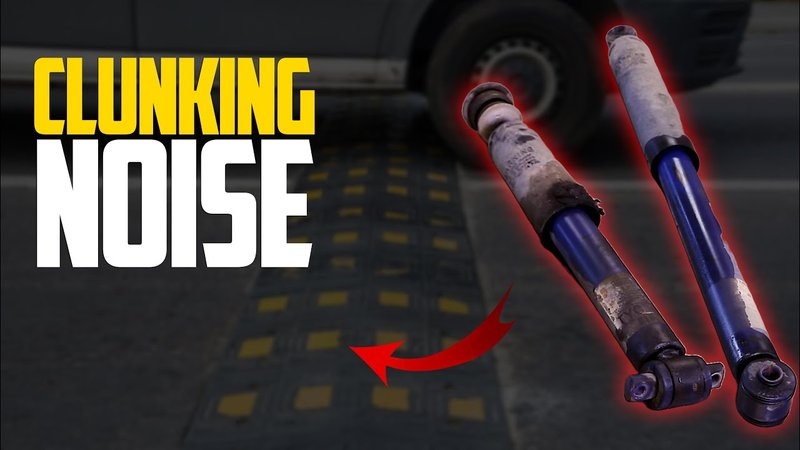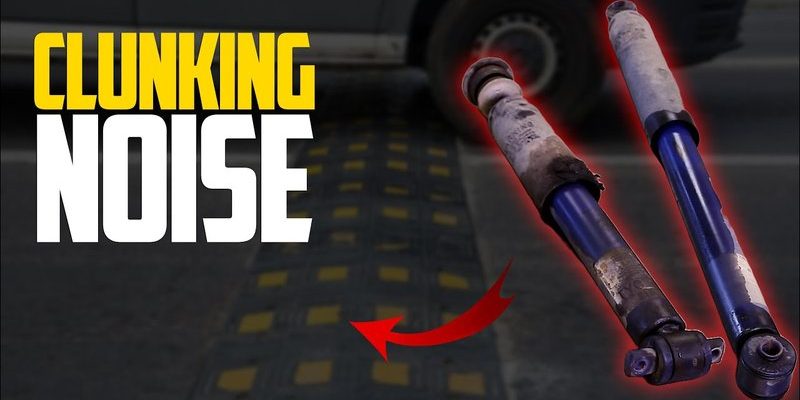
Honestly, you’re not alone if this clunky sound has you scratching your head. Deadbolts are supposed to be smooth and quiet—almost like a handshake for your door. When they start sounding like a sledgehammer, it’s usually a sign something’s off. Sometimes it’s a quick fix; other times, it can signal a deeper issue.
Let’s walk through what’s really happening when you hear that clunk, why it happens with different deadbolt types and brands, and how you can troubleshoot (or prevent) bigger problems. I’ll break it down step by step, keeping things simple and practical, whether you’re a DIY beginner or just trying to keep your front door from waking the neighbors.
Common Reasons Deadbolts Make a Loud Clunking Sound
Here’s the thing—deadbolts are pretty basic as far as locks go. When they clunk, it’s usually due to a handful of straightforward reasons. Most of the time, you’re dealing with one of these main issues:
- Misalignment: The bolt and strike plate aren’t lined up right, so the bolt slams into the metal instead of gliding into place.
- Loose parts: Screws, internal mechanisms, or the lock body can loosen over time, leading to extra movement and noise.
- Worn or dirty components: Dust, grime, or just old, worn parts can cause the bolt to stick, jerk, or move with a clunk.
- Design quirks: Some heavy-duty deadbolts, or certain brands like Schlage or Yale, naturally sound a bit louder because of their heavy, all-metal construction.
You might be wondering—could this be a security risk? Generally, a clunky deadbolt isn’t a sign that someone’s been tampering with your lock. But if the noise is new or worse than before, it’s worth checking things out. A smooth, quiet deadbolt is more than just nice to have—it’s a sign that the lock is working properly and is less likely to fail when you really need it.
How Deadbolts Actually Work (and Why They Get Noisy)
If you’ve never opened up a deadbolt before, let me explain how these little workhorses are built. Once you get what’s happening inside, those clunky noises will make a lot more sense.
A typical deadbolt—whether you’ve got a classic manual turn model or a smart deadbolt with battery-powered locking—has a metal bolt that slides into a hole (the strike plate) in your door frame. When you turn the key or thumbturn, a bunch of small metal parts (like pins, springs, and cams) inside the lock body move the bolt in and out. Ideally, everything lines up and moves smoothly—like a zipper closing up.
But here’s where things often go wrong:
- If the bolt doesn’t line up perfectly, you’ll get a loud clunk as it jumps or bangs into the strike plate.
- If the lock mechanism is loose or dirty, you’ll feel extra movement and resistance, making the bolt snap into place instead of sliding.
- Some brands use heavier bolts (especially in “high-security” models), so even normal use can sound louder.
It’s a bit like shutting a car door. If the latch is lined up, it’s a quiet click. If it’s off, it’s a thunk or a slam. Your deadbolt works the same way.
Deadbolt Brand and Type: Why It Matters
Not all deadbolts are created equal. Different brands and types can affect how noisy your lock is when you engage it. For example, Kwikset deadbolts are known for being user-friendly and lightweight, so they’re usually quieter—unless something’s stuck or misaligned. Schlage models, on the other hand, tend to feel more solid and chunky, which sometimes means a heartier clunk.
Let’s break it down:
- Kwikset and Yale: These brands often use lighter bolts and plastic internal parts, so they’re pretty quiet unless you need a battery replacement or the lock is out of sync mechanically.
- Schlage or Baldwin: Their deadbolts are heavier and use more metal inside. That can make for a louder, more noticeable sound—even when everything’s working.
- Smart deadbolts: Battery-powered locks can clunk if the battery is low or if the bolt doesn’t fully extend due to sync issues or code errors.
Here’s a little story: I once installed a “no-brand” deadbolt for a friend. The thing clunked so loud, we thought someone was knocking every time we used it. Turns out, the internal cam was slightly bent. After replacing it with a well-reviewed Yale model, the difference was night and day. Sometimes, quality really does matter.
Troubleshooting a Loud Deadbolt: Step-by-Step Fixes
If your deadbolt’s making that dreaded clunk, don’t panic. There are some easy things you can try before calling a locksmith. Here’s a step-by-step rundown, whether you have a manual or smart lock:
- Check for misalignment: Open your door and engage the deadbolt (so it extends into open air). If it’s smooth and quiet, the problem is probably the strike plate. Try loosening the screws and adjusting the plate up, down, or sideways until the bolt slides in without resistance.
- Tighten all screws: Loose mounting screws on the lock body or strike plate can exaggerate every movement. Give everything a quick tighten with a screwdriver—it might fix the problem instantly.
- Clean and lubricate: Over time, dust and debris build up inside the lock. Use a little graphite or a lock-specific lubricant (never WD-40), and work the key or thumbturn back and forth a few times.
- If you have a smart deadbolt: Make sure the batteries are fresh, the code or programming is correct, and the lock is in sync with the door. Sometimes a reset or re-pairing can solve odd noises.
If none of these fixes solve the clunk, you might have worn or damaged parts inside. Some brands sell rebuild kits, or you might need to replace the deadbolt altogether—especially if it’s decades old or has been forced in the past.
When to Worry: Signs of Serious Deadbolt Problems
Let me be straight with you: A single loud clunk isn’t always a big deal, but there are times when you should take it seriously. Here are a few signs that your lock might need professional help:
- The bolt doesn’t fully extend or retract, no matter what you try. This could mean internal damage, a worn battery (in smart models), or a stuck mechanism.
- You see metal shavings or dust around the lock or strike plate. That’s a clear signal something’s wearing out fast.
- The lock feels loose or wobbly when you turn the key or thumbturn. If tightening screws doesn’t help, you might have a stripped hole or cracked lock body.
- The clunk has gotten much louder or is paired with grinding, scraping, or difficulty turning. That’s a big red flag.
If your deadbolt is acting up like this, don’t just leave it. Not only does it mean your security is at risk, but a failing deadbolt can jam up—leaving you locked in or out right when you least expect it.
Deadbolt Maintenance Tips for a Quieter Lock
Here’s the good news—most deadbolt noises can be prevented with a little care now and then. You don’t have to be a locksmith to keep things quiet and smooth.
- Lubricate twice a year: Use a graphite-based lock lubricant, not greasy sprays. Just a puff in the keyhole and bolt, then work the mechanism a few times.
- Keep the area clean: Dust and grime can work their way into the lock over time, especially outside. A quick wipe-down now and then makes a big difference.
- Check alignment after big weather changes: Doors swell and shrink with humidity. If your deadbolt suddenly gets noisy, a tiny realignment might be all you need.
- Replace worn or cheap parts: If you installed a budget deadbolt and it’s always been loud, consider upgrading to a better brand. Sometimes, it’s just built into the design.
A little attention every year can keep your lock running smooth—and save you from those jarring clunks (or future lockouts).
Comparing Deadbolt Types: Manual vs Smart Locks
It’s worth mentioning that the kind of deadbolt you have affects what troubleshooting steps you’ll take—and how loud it might naturally be.
- Manual deadbolts: These are your classic twist-and-turn locks. They’re simple and dependable, but misalignment, loose screws, or old parts cause most of the noise. Fixes are usually straightforward.
- Smart deadbolts: Models from brands like August, Schlage, or Yale pair with your phone and run on batteries. If these start clunking, check for low battery, software issues, or mechanical jams. Sometimes, a quick reset or re-sync solves the problem. Other times, you might need to check the code (settings) or update the lock’s firmware.
Here’s a personal take: Smart locks are super convenient, but if you’re not comfortable troubleshooting codes, batteries, or pairing issues, a good old manual deadbolt is a lot less hassle—and usually quieter, too.
What If You Need a New Deadbolt?
Sometimes, after all the troubleshooting and tweaks, your deadbolt just won’t quiet down. If the clunking is there from day one (especially on a cheap model), it could be how it’s built. Or, if a formerly quiet deadbolt suddenly gets loud and no fix works, it might be time for an upgrade.
When shopping for a new deadbolt, here’s what I suggest:
- Stick to reputable brands: Kwikset, Schlage, Yale, and Baldwin are reliable and should run quietly if installed right.
- Consider your door material: Heavier doors and frames can handle chunkier, more secure locks without amplifying sound.
- Don’t cheap out on installation: Even the best deadbolt will clunk if it’s installed with bad alignment or loose screws.
A new deadbolt isn’t just about less noise—it’s about feeling secure without the constant reminder that something’s off every time you lock up.
Bringing It All Together: Quiet, Secure, and Reliable
At the end of the day, a loud clunking sound from your deadbolt usually means there’s something to fix—but it’s usually not a life-or-death situation. Whether it’s a simple alignment tweak, replacing a tired battery, tightening a screw, or maybe even upgrading to a better brand, the fix is often faster and easier than you’d think.
Staying on top of maintenance and paying attention to funny noises not only keeps your home quieter, but it also means your security is never left to chance. So, next time your deadbolt makes a racket, don’t stress—just take a few minutes to check it out. Your door (and your neighbors) will thank you.
